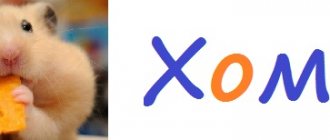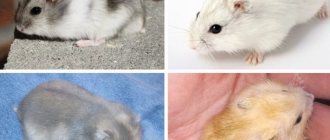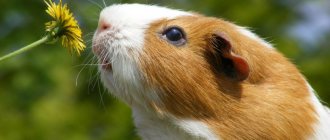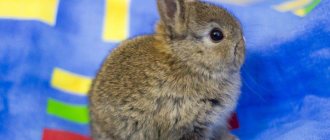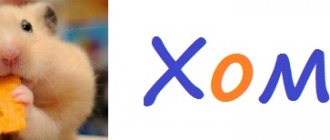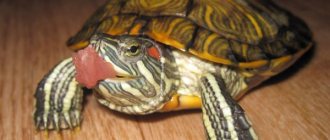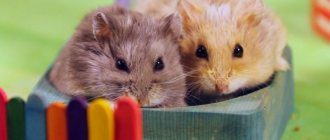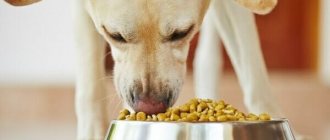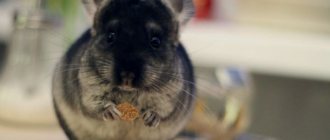Review author: “ZooVita”
The popularity of chinchillas as pets today is due solely to chinchillas themselves, which by their very nature have made people take a second look and notice the personality under the fur.
Thanks to their own merits, chinchillas have won human affection and respect. These furry animals have crossed the line from a commodity for fur production to a beloved pet.
And this will be fair, because this type of pet has been popular since 1920, and has become especially famous over the past 15 years. We are sure that after meeting them, you will be fascinated by their beauty. And the selection of photos of chinchillas will not allow you to doubt this!
General information about the domestic chinchilla
- Lifespan: up to 20 years in zoos
- Pregnancy: 111 days
- Birth number: 1 to 6, average 2
- Birth weight: 113 to 170 grams
- Maturity age: about 8 months
- Size Body length: from 220 to 240 millimeters; tail from 140 to 170 millimeters
- Weight: from 453 to 907 grams
How long does it take for a chinchilla to adapt after purchase?
The first few days after purchase the little animal refuses contact. This is fine. When the pet looks around at its new place of residence and gets used to it, its behavior will change - then it will be possible to get to know each other better. Typically the adaptation process takes 2 weeks. There is no need to disturb the rodent at this time and impose your company on it. It is necessary to protect the animal from any stress (noise, etc.)
Origin of the chinchilla
The domestic chinchilla is a nocturnal rodent native to the Andes. They belong to the Chinchillidae family and live exclusively in captivity.
It is a cross between Chinchilla Lanigera and Chinchilla Brevicaudata. They have been bred in captivity since 1923 and were selected for their thick, silky fur. Over the past 15 years, the chinchilla has become a popular household pet.
Appearance of a domestic chinchilla
Fast and fluffy is the most accurate and truthful description of this animal. The chinchilla is related to guinea pigs and porcupines.
With short front legs (which are used to hold food while sitting upright) and long, muscular hind legs, this rodent resembles the long-eared chinchilla rabbits.
Chinchilla hair is about 40 millimeters long with gray, white and black stripes. It may appear bluish or silvery gray. These creatures are fleet-footed. The chinchilla may look bulky, but behind its thick, silky fur hides the physique of an amazingly athletic rodent!
Large black eyes look at the ground and his bushy tail twitches. The short front feet have five toes, and the narrow hind feet have three toes and a vestigial toe with stiff bristles surrounding a small, flat claw. The bristles can help provide traction on any surface. Females are larger than males.
Having a thick coat and not being able to sweat, chinchillas can easily overheat in captivity. Its only cooling mechanism is to pump blood through its large ears, which have less hair.
Affiliate program for chinchilla breeding
Naturally, many would like to start such a business, but are not sure whether they can do it, do not know where and how to buy chinchillas for breeding, do not have practice in caring for them, and do not understand feed. And most importantly, the problem of further marketing of animals is of concern. What to do with young chinchillas that will appear in the near future?
There is an affiliate program for beginning chinchilla breeders. In accordance with it, you can not only buy the best chinchillas for breeding from us, but also receive all the relevant instructions, assistance, purchase food at a reduced price and all other support. You can start with a small number of specimens or buy several dozen if you wish.
It is important to emphasize that the program for attracting partners solves sales problems for business newcomers: you will hand over all the young stock to us. It is beneficial for us that our partners do well; our partners are guaranteed constant income and business development. If, after reading this article, you are interested in chinchillas and are thinking about starting such a business, we will be happy to help you make a choice and become our partners.
Chinchillas and business in Russia are profitable and reliable!
More details on our affiliate program - here
Physical characteristics of a chinchilla
The male chinchilla's body is slightly smaller, although the difference may not be immediately noticeable to the naked eye. They have a squat body and no markings on their heads.
Their length is from 20 to 35 cm, not counting the tail, which itself can reach 20 cm. An adult chinchilla will weigh from 400 to 800 g. They have a thick and bushy tail, the length of which varies.
They have thick fur all over their body, the color of which can vary. Their fur is one of the thickest on the planet.
The head may be larger or smaller depending on their genetic background. They have large round ears about 6 cm in diameter and are almost hairless. Their eyes, as befits nocturnal animals, are large and round, usually black or red depending on mutations and albinism.
Characteristic features of a chinchilla that affect its cost
Fur quality
The chinchilla's hair should be uniform, not matted, and without curls. The most expensive fur has the following characteristics:
- Density. The quality is checked very simply - you need to blow on the animal: if the skin is not visible, then the fur is quite thick.
- Length. Short fur is more valuable.
- Silky. Faded hair is a sign of poor nutrition or disease.
- Elasticity. When inflated, the fur should quickly return to its original position.
Color
The cost of both skins and live animals is affected by:
- color;
- uniformity;
- saturation;
- drawing;
- presence of lightened lesions and spots.
The natural color of chinchillas – dark gray – is well appreciated. The sides and back should have a uniform, rich dark color, and the white belly should have clear boundaries. If the scruff and paws are lightened, and the transition from the back to the belly is smoother, then the cost will be reduced.
Uniformity of color on the back and flanks is especially important in chinchillas of the same color. Lightened lesions and spots are a defect. But even stripes can increase the cost of the skin.
Chinchillas that do not have the ebony gene (with a white belly) must have a smooth check and a low color border. It’s good if an animal sitting on 4 legs doesn’t have a visible abdomen. It's not scary if it is visible in the form of a small corner from the back.
An ebony chinchilla with a colored belly is more valuable if the belly has the same color saturation as the back. But if the belly is a little lighter, this is not a defect.
Based on the standard colors - dark gray, white, beige, black - many new colors have been obtained. Such hybrids are valued much higher, since their breeding requires a lot of resources. The more difficult it is to obtain a mutation species, the more expensive an individual of this species will cost.
Personality of the domestic chinchilla
Chinchilla is a nocturnal animal. They will be more active at night and will therefore need a quiet place to spend the day. They are timid, like animals, but they still need to be socialized. They are sensitive to stress and enjoy their routine, so they do not like changes in their environment, such as moving for the holidays.
Territorially speaking, they will not enjoy the company of other chinchillas unless they are raised together. Do not mix male and female chinchillas as breeding is difficult for them.
How location of purchase affects cost
Market
The cost of animals on the poultry market is much lower. When choosing this method of acquisition, you should take into account the presence of a large number of risks, since this source is not reliable.
The main market assortment is culled individuals (sick, small and having other defects). Too low a price (up to 2,000 rubles) should alert the buyer - the animal will probably not live longer than a couple of months.
In markets in regions where there are no breeders, the cost of chinchillas is higher. But this is not a guarantee of quality, but only a consequence of the lack of competition.
Diet for a pet chinchilla (instructions)
The issue of chinchilla nutrition is important, if not the main one. This factor affects the health and behavior of your pet. From birth, the diet is carefully selected and gradually regulated. Therefore, we will consider in great detail what to feed a chinchilla in order to avoid mistakes.
Constant access to clean drinking water from a drinking bottle, checked twice a day. Without water, chinchillas can become seriously ill.
Good quality hay should form the majority of their diet and should be available at all times. A hay rack is a good way to access food. The chinchilla's digestive system requires hay and grass to function properly. Chinchillas naturally feed on grasses, leaves and twigs.
Chinchillas' teeth constantly grow throughout their lives, needing to be worn down and maintained at the correct length and shape by eating grass, hay, and grass-based pellets. Failure to follow a proper diet can lead to serious dental problems.
Offer a small amount (1-2 tablespoons per chinchilla) of grass-based pellets daily in addition to hay. They eat by sitting on their hind legs and holding food in their front legs. Chinchillas naturally eat for long periods of time, mostly at night.
Give your chinchillas only small amounts of dried fruits and root vegetables as treats. You can also give them assorted dried herbs and plantain. Avoid nuts and seeds as they are high in fat.
If they eat too much of the wrong foods, such as grains, fruits, sweets, they may become overweight, sick, and suffer. If the correct diet is always available, chinchillas will usually maintain the correct weight.
Avoid sudden changes in diet as this may lead to digestive problems and serious illness.
Monitor the amount and types of food your chinchilla eats and how much they drink.
If your chinchilla's eating or drinking habits change or the number or size of the litter becomes smaller, contact your veterinarian immediately as they may become seriously ill. How much a chinchilla needs to eat depends on their age, lifestyle and health.
Chinchillas produce two types of droppings: hard, dry pellets and softer, wet pellets, which they eat right off the bottom and are an important part of their diet.
Possible diseases
For a number of reasons, your pet chinchilla can get sick. In such cases, the pet will require immediate medical attention. An experienced specialist will conduct a diagnosis and select a treatment course based on special medications intended for rodents.
What diseases can a chinchilla develop:
- Hyperthermia is overheating of the body. This condition occurs if the recommended temperature regime is not observed. The deterioration of the pet’s condition begins already at an ambient temperature of +250C. If the air warms up to 300C, the chinchilla may die suddenly. The main symptoms of hyperthermia: immobility, redness of the tongue, stretching of the body while lying on its side, convulsions. First aid: the cage with the chinchilla needs to be moved to a cool place. To relieve her condition, it is recommended to moisten the outside of her ears and paw pads with cool water. To prevent dehydration, give your chinchilla water to drink.
- Abnormal stools and liquid feces are a fairly common problem in domestic chinchillas that arise as a result of poor quality nutrition or after a change in food. The owner needs to disinfect the cage and review the chinchilla’s diet. To combat loose stools, special medications are used that can be purchased at a veterinary pharmacy.
- Colds - occur due to hypothermia of the animal. For example, if the cage is in a draft or the chinchilla has been in low temperatures for a long time. Main symptoms: runny nose, cough, sneezing, watery eyes, lethargy. Chinchilla colds can be treated with medications prescribed by a veterinarian.
- Ringworm is manifested by hair loss in a certain area of the body. It develops as a result of stress or fear, as well as due to low immunity, unsanitary living conditions, or after contact with an infected pet. It is treated with special ointments as prescribed by a doctor.
In addition to the listed pathologies, the domestic chinchilla can develop diseases of the eyes, ears, digestive organs, reproductive system, and even have a stroke. Proper care and quality nutrition will reduce the risk of developing diseases.
Chinchilla health and care (rules)
Chinchillas are quite fragile creatures. They may faint if they get scared, and an injured chinchilla will remain stressed for life. They are also prone to depression.
Don't be afraid to let them out of their cage, but it is important to remember that they are very sensitive to drafts, heat, direct sunlight and other sudden changes in temperature.
Chinchilla diseases
There are several diseases that chinchillas are susceptible to:
- Malocclusion (misaligned teeth)
- Toxemia (blood poisoning)
- Scurvy (vitamin C deficiency)
- Digestive problems
- Problems during childbirth
- They may also chew their own fur when stressed, malnourished, or due to a hereditary problem.
They will need a fairly large cage with levels that they can go up and down to expend their energy.
Non-toxic twigs and dried flowers will make them very happy, but feed them sparingly because they are essentially sweets for them. Also prepare a food dispenser, bedding, water dispenser, hay and a special box of soil for the chinchilla, as well as a small shelter.
Chinchillas are herbivores, so they eat hay and pellets intended for chinchillas. Since they are high maintenance, you will need to learn how to care for a chinchilla. Therefore, they are not recommended as pets for children.
The fact that how long a chinchilla lives depends on the quality of its existence is entirely your responsibility.
Taming and walking
Chinchillas are self-sufficient animals by nature, preferring solitude. They cannot be raised and tamed like dogs or cats, although there are exceptions. Some furry representatives show affection and happily sit in the arms of the owner.
How to tame a pet chinchilla:
- During the first days of a week of living in a new home, the rodent needs to adapt. During this period it is better to leave him alone.
- Starting from the 3rd week, you can begin taming: talk to your pet, try to open the cage and extend your hand to the chinchilla. This may interest her, she will begin to sniff the palm and quietly bite the fingers. Chinchilla bites are absolutely safe and painless.
- When the chinchilla gets used to the owner's hand, it can jump onto the palm. The owner does not need to make sudden movements and try to pull the pet out of the cage. At first, such communication procedures are enough.
- For any success in training, you can reward your chinchilla with a tasty treat.
- When the rodent gets used to the person, you can try to lure him out of the cage and put him in your arms. Prepare a treat for your furry friend in advance. Gently stroke the fur on the neck, ears and chest, encouraging the animal with kind words. Try not to stroke your chinchilla's back or sides; he won't like it.
- Communicate with the chinchilla, calling it by name, let it get used to its nickname.
- Do not pick up your chinchilla against its will. She may get scared and bite or scratch in self-defense. Another fighting technique of this rodent is shooting urine at the enemy.
If a chinchilla finds contact with its owner unpleasant, it will make a dissatisfied noise. At such moments, it is better to leave the rodent alone and postpone all attempts to tame the pet to another time. Let her calm down and get used to attention from people.
Interesting facts about chinchillas
- Chinchillas are one of the longest-living rodents, living up to 20 years with proper care.
- Its incredibly soft fur is thick, with 50 to 75 hairs growing from one hair follicle. In contrast, in humans, 2 to 3 hairs grow from one follicle.
- Chinchillas love to relax! They may overheat if it is humid and above 26 degrees Celsius.
- If a chinchilla is threatened or attacked, it may "fur slide" and shed clumps of fur, leaving a potential predator empty-handed.
If you are seriously considering the fluffy and cute chinchilla as a pet candidate, you should turn your attention to the equally funny and beloved silver chinchilla. Remember, the profiles of all breeds are general, but each animal is individual!
Preparing for the appearance of a chinchilla in the house
In order for the chinchilla to be comfortable in the apartment, the future owner needs to carefully prepare everything.
- Buy a cage. Its dimensions must be at least 60 cm in height, 60 cm in length and 50 cm in width. All locks must reliably secure the rodent’s exit from the “house”.
- Buy a water bowl and feeder, a small box house for the animal to sleep, shelves for sharpening teeth, a hay box, mineral and salt stones, and floor filler.
- For entertainment, the chinchilla will need: ladders, hollows and rings made of wood, a running wheel, a hammock, and wooden toys.
- Chinchillas only take sand baths; getting water on the rodent’s fur is unacceptable. It is better not to place a sand bath in the cage to prevent rapid contamination of your pet’s home and to avoid drying out its skin. It is best to bathe a chinchilla while cleaning the cage, transferring the animal to a bathtub or basin where the bathtub is installed.
Note! Chinchilla fur is thick and warm, so they need a place where the air temperature does not exceed 22 degrees. Do not place the cage near radiators, refrigerators or other heating devices.
- Dog breeds
- Urban dog breeds
- Origin of the cat
- Hypoallergenic dogs
- Fighting dog breeds
- The rarest cat breeds
